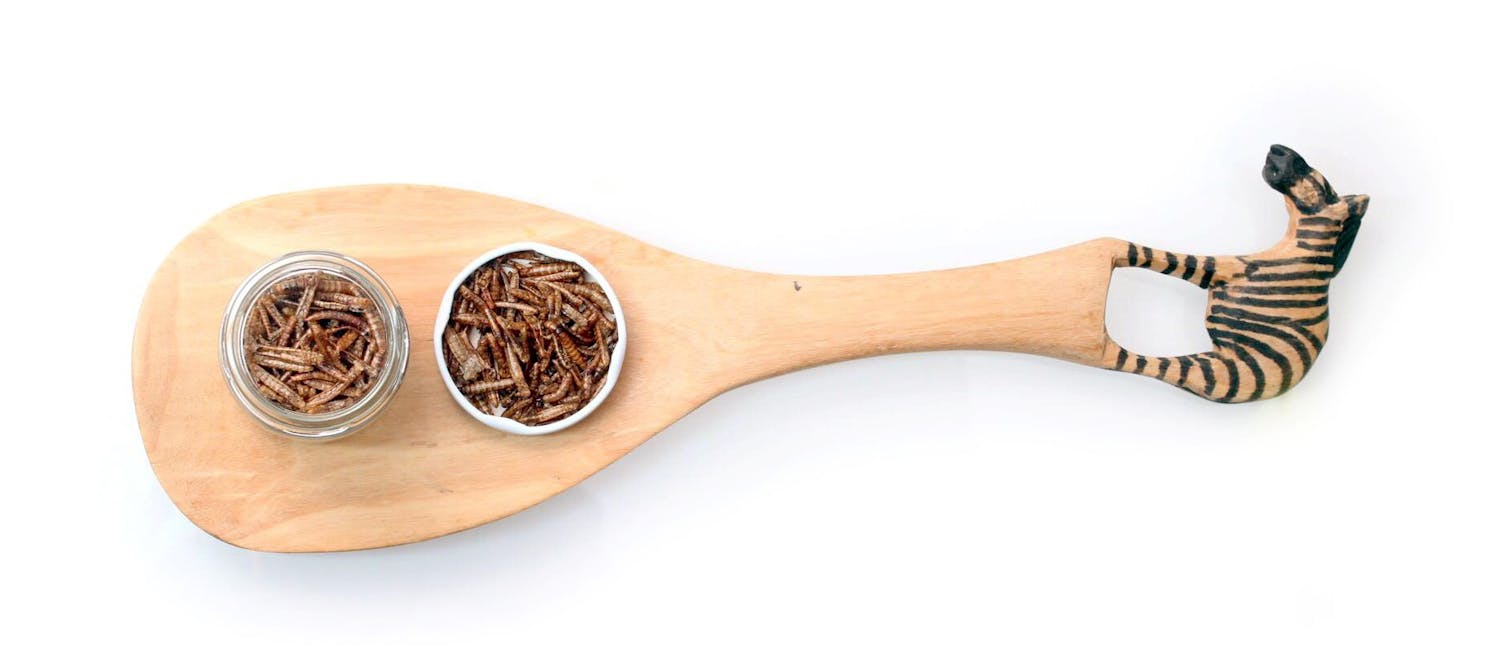On the Menu: Mealworms
26 July 2020
3 min read

Fun facts
1. Another bug with an identity crisis
We've heard this before, but this worm is not a worm either - can worms not just stay worms for fucks sake? Similarly as our , the mealworm is actually a beetle too. The mealworm we're eating is the larva of the mealworm beetle or darkling beetle, also known under its Latin name Tenebrio Molitor.
2. This world-traveller originally comes from the Mediterranean
Even though unsure, the mealworm most likely originates from the Mediterranean region: somewhere in Southern Europe and Northern Africa. Historically, the first mentions of the bug can be traced back to the Bronze Age in Turkey (somewhere between 3000 and 1000BC) [3].
3. The environment has a massive impact on this little one
Based on the conditions, the mealworm can turn out in a variety of ways. Coming from the Mediterranean area, like other mealworms, this one likes it pretty warm and humid. But also in other environmental conditions this creepy crawler will not be stopped.
However, it does have an impact of the nutrional values in the end. The percentage of protein, for example, can be found ranging somewhere between 38 and 55 depending on where you're looking for it [2].
4. They're cannibalists
Worms that are not worms, as we've learned before, eat basically everything. The same can be said for the mealworm. Fun fact: many things the mealworm likes actually include the word "meal" or have something to do with meal. Oatmeal, cornmeal, or other grains crushed into meal or definitely on the menu.
In the wild, they are primarily vegetarian and eat fungi, seeds and they also like decomposing plants. In general, they eat a wide variety of things that are not alive. One exception though, in overcrowded or poor conditions, they also have no problem eating each other.
5. Can the mealworm save us in the fight against plastic?
So they eat about anything. And we can take this even one step further, as the rock-solid stomach of the mealworm has absolutely no problem eating plastic either. In a study conducted by Stanford University and Chinese researchers, the researchers published three pretty awesome findings [1]:
- The larval gut of mealworms can degrade styrofoam (pretty much considered a non-biodegradable plastic) within less than 24 hours
- Feeding larvae with only styrofoam for a month kept these buggers as healthy as on a regular diet (consisting of bran)
- Mealworms convert styrofoam into 49.2% feces (for the recyclers among us: usable as a fertilizer) and 47.7% CO2. Plastic in, no plastic out, if that ain't impressive then what is?
We foresee a win-win situation here. More mealworms means more sustainable protein and if we put them on a plastic diet we get rid of plastic waste in the process. How DIY green sustainable eco-friendly greenly awesome does that sound?
Nutritional values
As said, the environmental conditions of where a mealworm is raised can have a pretty big impact on how this little one turns out to be. So nutritional values can also vary between different mealworm products. We usually buy our dried mealworms from catch-your-bug.com and they have the following nutritional values per 100 grams:
- 475 calories
- 55.1 grams of protein -> 46.3% of the calories
- 0.9 grams of carbs -> less than 1% of the calories
- 31.9 grams of fat -> 60% of the calories
- Yang, Y., Yang, J., Wu, W. M., Zhao, J., Song, Y., Gao, L., ... & Jiang, L. (2015). Biodegradation and mineralization of polystyrene by plastic-eating mealworms: Part 1. Chemical and physical characterization and isotopic tests. Environmental science & technology,49(20), 12080-12086. Available at: https://pubs.acs.org/doi/abs/10.1021/acs.est.5b02661
- Paolo Lucchesi (2019). Mealworms Can Eat Styrofoam And not Die — 14 AMAZING Facts About the Mealworm. Accessed May 19, 2020 at https://www.eatcrickster.com/blog/mealworm-facts
- Panagiotakopulu, E. (2001). New records for ancient pests: archaeoentomology in Egypt.Journal of Archaeological Science,28(11), 1235-1246. Available at: https://www.eeo.ed.ac.uk/globalchange/group5b/QuatEnt/Panagiotakopulu2001newrec.pdf
- Finke, M. D. (2015). Complete nutrient content of four species of commercially available feeder insects fed enhanced diets during growth.Zoo biology,34(6), 554-564. Available at: https://onlinelibrary.wiley.com/doi/epdf/10.1002/zoo.21246
